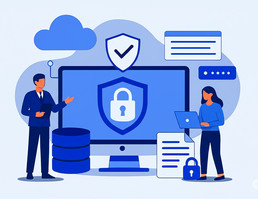Many teams want two things at the same time: higher productivity and safer data. CurrentWare and AnySecura both manage Windows endpoints, but they focus on different goals. This chapter explains those differences so you can pick the tool that fits your day-to-day work and your risk profile.
In this chapter, you will see a side-by-side comparison across five areas: endpoint activity monitoring, USB & data-loss prevention, web & app control, power management, and unified management. We show what each product is best at, where it is weaker, and what kind of team will benefit the most.
By the end, you will know:
- Which product is stronger for your main use cases (productivity vs. data protection)
- What trade-offs you should expect in day-to-day operations
- How to run a quick pilot to validate your decision
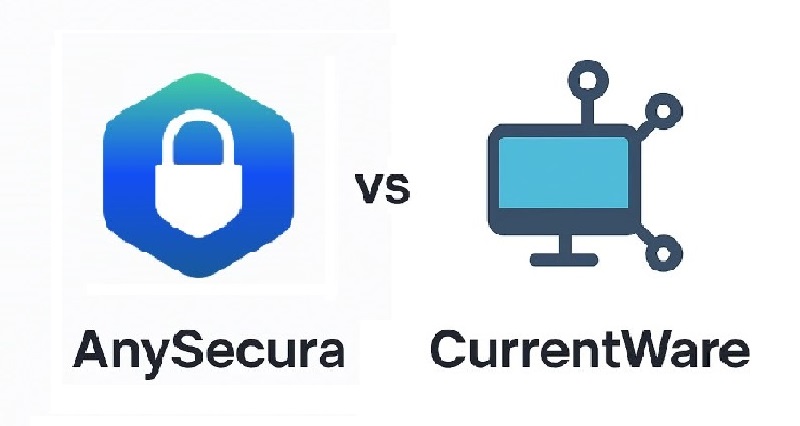
Part 1: What is CurrentWare? What is AnySecura?
What is CurrentWare?
CurrentWare helps organizations improve day-to-day productivity and enforce acceptable-use policies on Windows endpoints. It gives managers clear visibility into how employees spend time online and within apps, so they can reduce distractions, shape healthier work habits, and keep network resources responsive. The value is operational discipline with minimal friction: consistent policy enforcement, simpler compliance reporting, and a transparent feedback loop that nudges teams toward focused, accountable work.
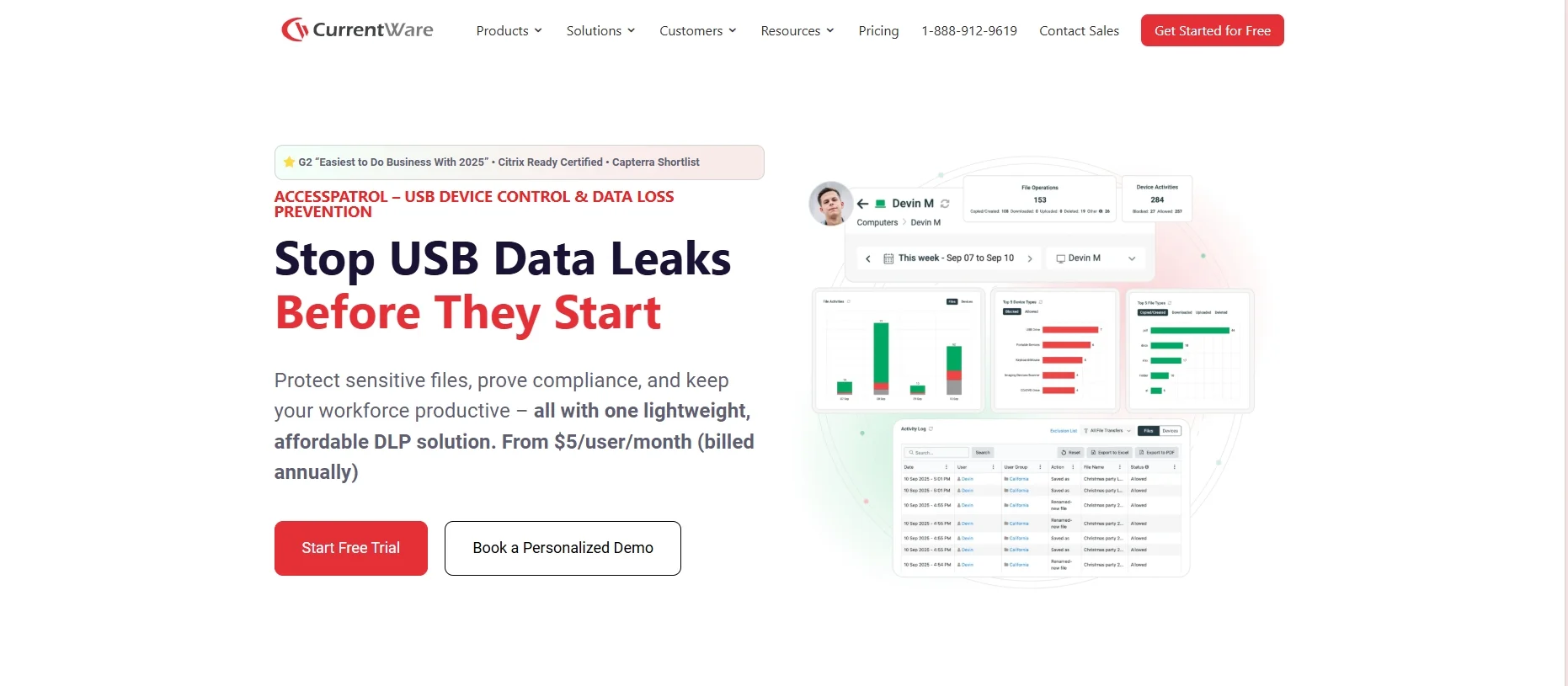
What is AnySecura?
AnySecura is designed to reduce insider risk and protect sensitive information across the document lifecycle. It identifies confidential content, guards it wherever it moves, and shuts down common exfiltration paths—so data stays controlled without slowing the business. The value is measurable risk reduction: stronger evidence for audits and investigations, fewer leakage incidents, and faster, policy-driven responses—all coordinated through a central console and lightweight agent to keep protection consistent at scale.
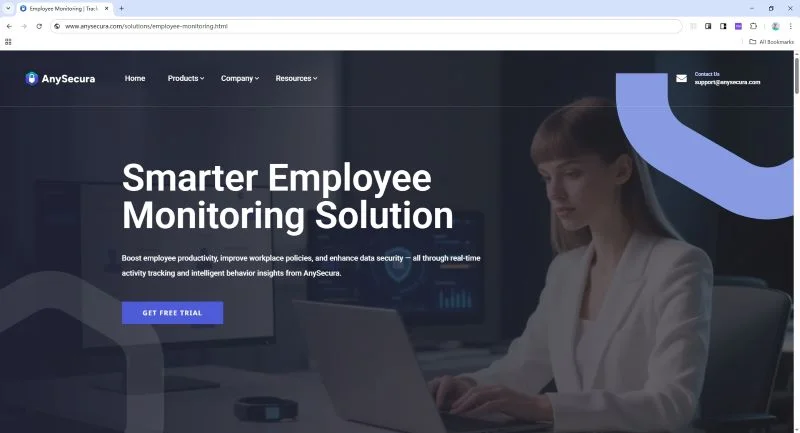
Together, they represent two angles on the same challenge: keeping work efficient while keeping data safe, delivering centralized oversight, faster incident response, and a measurable drop in operational and compliance risk.
Part 2: AnySecura vs CurrentWare: Features, Pros and Cons
1. Endpoint Activity Monitoring
| Dimension | What It Means | CurrentWare | AnySecura |
|---|---|---|---|
| Activity Coverage | Depth/variety of events: apps, web, documents, printing, USB, installs, traffic. | ✔Apps/Web + Screens + Idle | ✔Apps/Web + Doc Ops + USB + Printing + Installs + Traffic |
| Screen Monitoring | Live views, screenshots, continuous capture for evidence. | ✔Live view & screenshots | ✔Live (up to 16), screenshots, continuous recording |
| Control Depth | Move beyond monitoring to kill/lock/block actions. | ✔Block sites/apps per policy | ✔Force-end process, remote control, forced shutdown |
| Schedule Control | Collect and/or enforce by work hours/time windows. | ✔Time-based internet/app rules | ✔Time windows for both monitoring & enforcement |
| Reports & Alerts | Automated reports, real-time warnings to endpoints/console. | ✔Automated reports & alerting | ✔Endpoint warnings + console alarms; optional block |
| Privacy/Transparency | Controls that minimize sensitive capture, notify users. | ✔Transparency options | ✔Policy-tuned scope |
Activity coverage
Both CurrentWare and AnySecura give managers a good view of what employees are doing on their computers, but they focus on slightly different things. CurrentWare tracks apps, websites, file transfers, USB devices, and cloud uploads. AnySecura goes further, also tracking documents, printing, software installations, and network traffic. This makes AnySecura better if you want very detailed activity logs.
Screen monitoring
CurrentWare lets you look at desktops remotely and take screenshots at set times, which is enough for checking work and compliance. AnySecura allows live viewing of up to 16 screens at once and can record screens continuously. In short, CurrentWare is lighter and less intrusive, while AnySecura gives a more complete view of what is happening in real time.
Application tracking / Control
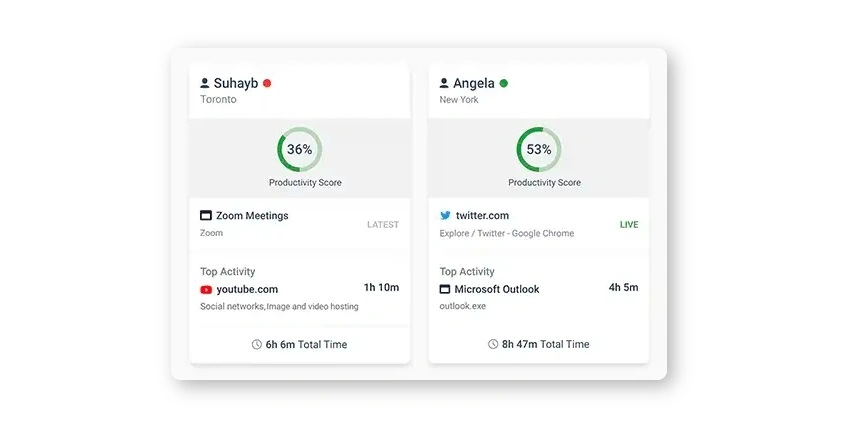
Both programs track apps and let you control them, but in different ways. CurrentWare logs app use and lets you block or allow apps and websites. AnySecura also lets you remove apps, stop running programs, or even shut down a computer if needed. CurrentWare focuses on monitoring with light control, while AnySecura gives stronger enforcement.
Schedule-based control
Both systems can follow work schedules. CurrentWare can block apps or websites only during work hours and relax rules after hours, which is better for privacy. AnySecura can schedule both monitoring and blocking, so it can automatically adjust how much it tracks or restricts based on the time of day. This makes AnySecura more flexible for strict office rules.
Reports & alerts
Both tools can make reports and send alerts. CurrentWare creates daily or weekly summaries showing productivity, idle time, and rule violations. AnySecura adds real-time alerts, endpoint warnings, and can even block actions immediately. CurrentWare is useful for reviewing history, while AnySecura helps react as things happen.
Privacy / Transparency
Both programs include options to respect privacy. CurrentWare can run visibly or hidden, notify users about monitoring, and limit how long data is kept. AnySecura also allows admins to choose what is recorded under each policy. CurrentWare focuses on keeping monitoring simple and transparent, while AnySecura allows very precise control of what gets tracked.
 Verdict
Verdict
Who this is for: Security and IT teams that need to see what is happening on computers in real time and stop risky actions quickly.
What we compared (weights): How many things each tool can watch (25%), how strong the evidence is for investigations (20%), how much control you have to stop problems (20%), schedule options (15%), reports and alerts (10%), and privacy/transparency settings (10%).
How we decided: Both tools can watch apps and websites, take screenshots, and use time-based rules. However, AnySecura watches more areas, like document actions, USB use, printing, software installs, and network traffic. It can also record the screen continuously and let you end a risky process or take control of a device right away. These extras help teams react faster when there is insider risk. CurrentWare is still good and gives clear activity views that managers like, but it does not go as deep when you need to stop a process on the spot.
Note: If your main users are team managers who just want simple productivity reports, CurrentWare may feel easier to understand day to day.
2. USB Device Control & Data Loss Prevention
| Dimension | What It Means | CurrentWare | AnySecura |
|---|---|---|---|
| Device Control | Full/Read-Only/Blocked for USB & peripherals; allowlist. | ✔ | ✔ |
| Encrypted USB (Intranet-bound) | Register USB as encrypted; usable only within managed network. | —(Not the focus) | ✔Registered, dept-scoped access |
| Temporary Authorization | Time-bound access/keys for exceptional use. | ✔ | ✔Expiring encryption validity |
| File-Transfer Protection | Block copying to USB/cloud; restrict email/IM/web uploads. | ✔USB/cloud blocks | ✔USB/cloud + email/IM/web channels |
| Dept-Level Segmentation | Limit which groups/devices can access which media. | ✔ | ✔Auto encrypt/decrypt per dept |
| Real-Time Alerts | Warn on endpoint; alarm to console for oversight. | ✔ | ✔ |
USB devices
Both CurrentWare and AnySecura let you monitor and control USB device access, including setting read/write permissions or blocking devices entirely. AnySecura also allows registering USB drives as encrypted, so they can only be used within a managed network. This registration can include device name, department, contact info, and a time-limited authorization. While CurrentWare focuses on basic control and temporary access, AnySecura adds the extra layer of network-bound encryption for higher security.
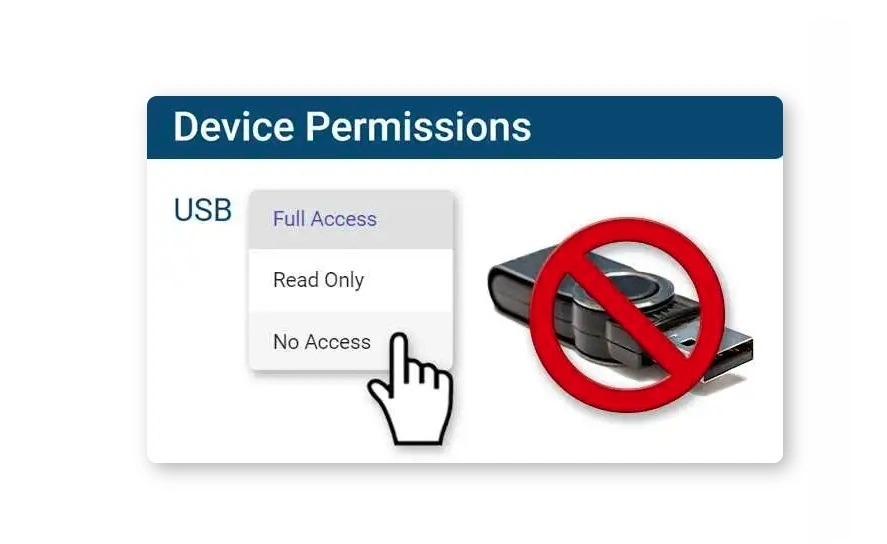
File-transfer protection
Both tools can protect files from being copied to USB drives or cloud storage. CurrentWare mainly blocks USB and cloud transfers, while AnySecura goes further by also restricting email, instant messaging, and web uploads. AnySecura also allows remote uninstallation or blocking of risky or non-work applications, giving admins more control over potentially unsafe file transfers.
Real-time alerts
Both CurrentWare and AnySecura can send alerts in real time. CurrentWare will warn users at the endpoint and notify administrators of policy violations. AnySecura can do the same and additionally supports department-level rules so that each group can only access or auto-encrypt/decrypt its own removable media. This allows more precise control and better oversight across different teams.
 Verdict
Verdict
Who this is for: Companies that must follow strict data rules and worry about files leaving the company through USB drives, email, chat apps, or the web.
What we compared (weights): How detailed the device rules are (20%), support for encrypted USB that only works inside the company network (20%), protection for other channels like email/IM/web/cloud (25%), department-based controls (15%), and alerts/audit logs (20%).
How we decided: Both tools can allow or block devices and can track file transfers. AnySecura goes further. You can register a USB as an encrypted drive that only works in the managed network, and you can store info like department, contact, and the time period it's allowed. It also blocks uploads by email, chat, and web, not just USB. Departments can get their own rules so people only use their own authorized devices. CurrentWare covers the basics well, but AnySecura gives more control for real DLP programs.
Note: If you only need simple USB rules like Allow, Read-Only, or Block with basic reports, CurrentWare is enough. The extra steps in AnySecura matter most when you need stronger proof and tighter control.
3. Web Browsing & Application Control
| Dimension | What It Means | CurrentWare | AnySecura |
|---|---|---|---|
| Website Control | Categories, allow/deny lists, SafeSearch, custom prompts. | ✔Strong web focus | ✔ |
| Application Blocking | Prevent specified Windows apps; per-app policies. | ✔ | ✔ |
| Upload/Download Control | Gate transfers by file type and channel. | ✔ | ✔ |
| Bandwidth/Rate Limiting | Throttle by protocol, port, or app to protect QoS. | ✔Bandwidth rules | ✔Protocol/port/app throttling |
| Search Keyword Logging | Record queries to analyze browsing intent. | ✔ | ✔ |
| Time Policies | Restrict by schedule for cleaner work hours. | ✔ | ✔ |
Both CurrentWare and AnySecura allow administrators to block websites and applications based on categories, allow/deny lists, and per-app policies. CurrentWare has a strong focus on web filtering, making it easy to manage safe browsing and productivity. AnySecura offers similar controls, but also goes further by limiting bandwidth for specific protocols, ports, or applications, helping protect overall network performance while enforcing usage rules.
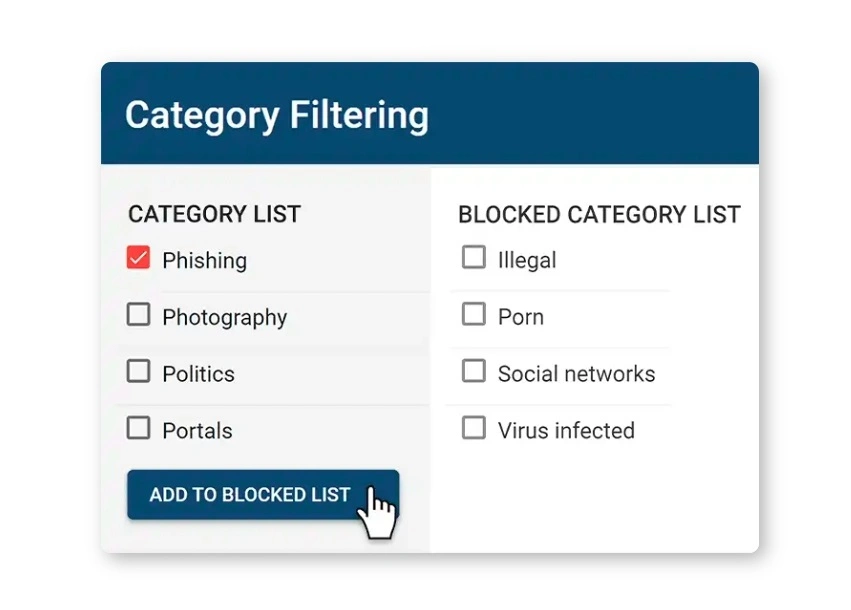
Both systems also track search activity. CurrentWare can log search keywords to understand user intent, while AnySecura does the same and integrates this data with policy enforcement, giving a more complete view of online behavior. In addition, both platforms allow time-based rules, so website and app access can be restricted during certain hours, helping maintain focus during work periods.
 Verdict
Verdict
Who this helps: IT teams running acceptable-use programs to reduce distractions and keep networks responsive for day-to-day work.
What we compared (weights): Web filtering maturity (30%), App blocking (15%), Upload/Download control by file type (15%), Bandwidth/rate limiting (20%), Search-keyword visibility (10%), Time-window policies (10%).
How we decided: CurrentWare is slightly better for basic web control because it has easy-to-use categories, allow/deny lists, SafeSearch, and manager-friendly prompts. AnySecura has the same basic controls but also lets you limit bandwidth by protocol, port, or app, and track search keywords, which works well with its wider data-protection features. If you just want simple internet rules, CurrentWare is easier to use. If you want both network performance and data protection, AnySecura does a good job too.
Note: If you need to limit internet speed for certain programs or network ports and also control what people can access, AnySecura’s network tools can be very useful.
4. Power Management & Remote Control
| Dimension | What It Means | CurrentWare | AnySecura |
|---|---|---|---|
| Remote Power Actions | Power on/off, restart, lock, sign out. | ✔ | ✔Plus startup-item control |
| Wake-on-LAN | Remotely wake devices for maintenance windows. | ✔ | ✔ |
| Power Scheduling | Automate shut-down/hibernation by time or idle. | ✔Rich scheduling | —(No timed on/off policies) |
| Audit Trail | Log power events for compliance. | ✔ | ✔ |
Both CurrentWare and AnySecura let administrators control power actions on endpoint devices. You can remotely shut down, restart, lock, or sign out users. AnySecura goes a step further by allowing control over startup items, which helps prevent too many programs from slowing down a computer when it boots. Both systems also record these actions for audit purposes.
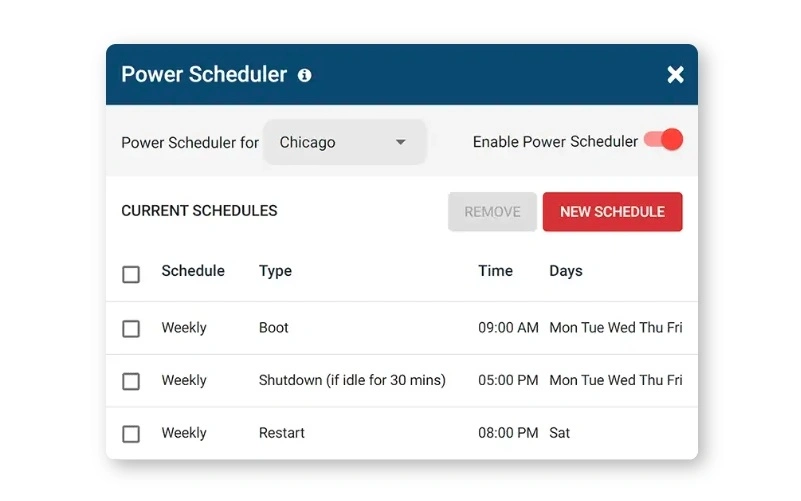
Both platforms support Wake-on-LAN, so devices can be powered on remotely for maintenance or updates. CurrentWare offers rich power scheduling options, allowing automated shutdowns, hibernation, or other actions based on time or idle state. AnySecura does not currently include scheduled power on/off policies, but its remote control features still cover most immediate management needs.
 Verdict
Verdict
Who this helps: IT teams that want to block distracting websites/apps and keep the company internet fast and stable for daily work.
What we compared (weights): Web filters (30%), App blocking (15%), Upload/Download rules by file type (15%), Bandwidth limits (20%), Search keyword logs (10%), Time-based rules (10%).
How we decided: CurrentWare is a little better for web rules. It has easy site categories, allow/deny lists, SafeSearch, and clear on-screen messages for users. AnySecura has these basic web/app controls too. It also lets you slow down traffic by protocol, port, or app, and it records search keywords, which is useful for data protection checks. If you mainly want simple internet rules and easy reports, CurrentWare is a bit simpler. If you also need bandwidth control and want to connect web rules to data protection, AnySecura is very close.
Note: If you must slow down certain protocols or ports and link that to content rules, AnySecura may fit better.
5. Unified Management & Platform Security
| Dimension | What It Means | CurrentWare | AnySecura |
|---|---|---|---|
| Centralized Console | Unified policy and monitoring; AD alignment. | ✔AD-friendly management | ✔DLP-centric console (Agent-based) |
| Remote Management | Extend controls to off-network devices. | ✔Flexible deployment | ✔Out-of-office authorization for encrypted docs |
| Platform Security | Admin login hardening, RBAC, 2FA. | —Varies by setup | —2FA not supported |
| Enterprise DB | Scale with external databases and backups. | ✔SQL-friendly | ✔Consolidated logs & backups |
| DLP Scope | Doc security, classification, tracing. | —Basic exfil guardrails | ✔Transparent Encryption + Watermarking & Document Tracing |
Both CurrentWare and AnySecura have the ability to manage devices and set rules. CurrentWare works well with Active Directory, making it easy for IT teams to manage users and computers. AnySecura focuses more on data protection and lets admins track lots of actions on each device—like apps, websites, documents, USB drives, printers, emails, and file backups. This makes AnySecura stronger for organizations that need more detailed security across departments and networks.
For document security, AnySecura lets each department have its own secure space and classification rules. This stops employees from seeing files from other departments by mistake. CurrentWare offers basic document security and blocks some risky file actions, but it doesn’t have advanced department-based encryption or tracking.
Both systems let you manage devices remotely. CurrentWare works well for employees who are off the network. AnySecura also lets employees request access to encrypted documents when they are outside the office. Both keep logs and backups for compliance, but AnySecura combines all the information in one place to make it easier for admins to see everything.
 Verdict
Verdict
Who this helps: Organizations consolidating endpoint oversight under one console, especially those building formal DLP/insider-risk programs.
What we compared (weights): Console cohesion & AD alignment (25%), Remote/off-network support (15%), DLP scope (classification, tracing, doc control) (35%), Admin hardening (2FA/RBAC) (15%), Scalability/log retention (10%).
How we decided: Both centralize policies and support off-network management. AnySecura's strengths are DLP-centric: departmental secure spaces, document classification, transparent encryption, and watermarking/tracing—plus out-of-office authorization for encrypted docs. Admin hardening is a mixed bag (2FA not supported), so RBAC/ops process matters. CurrentWare aligns well with AD and scales cleanly but is less focused on document-centric controls.
Note: If you need 2FA at the console layer, validate your compensating controls. For teams without formal DLP mandates, CurrentWare's simpler admin model may be easier to operate.
Part 3: What Should You Choose?
Choose CurrentWare if your primary goal is workplace productivity, internet/app compliance, and scheduled power management. You'll get straightforward policies, strong web filtering, and clean reporting for managers.
Choose AnySecura if your priority is protecting sensitive documents and reducing insider risk. You'll benefit from broader activity coverage, encrypted-USB workflows, channel-wide exfiltration blocks (email/IM/web), and evidence-grade screen + activity logs.
| Scenario | Best Fit | Why |
|---|---|---|
| Cut distractions, tighten internet usage, and report on productivity | CurrentWare | Web/app policy strength, clear reports, time-based controls |
| Prevent data leaks via USB, email, IM, or cloud uploads | AnySecura | Encrypted USB registration, channel-wide blocks, granular audit trails |
| Automate after-hours shutdowns or energy-saving schedules | CurrentWare | Rich power scheduling with Wake-on-LAN |
| Departmental segregation of sensitive documents | AnySecura | Secure spaces & classification, transparent encryption |
| Fast incident reconstruction with visual evidence | AnySecura | Continuous screen capture + multi-dimensional logs |
Conclusion
When comparing AnySecura vs CurrentWare, the decision ultimately depends on what your organization values most—depth of visibility or ease of control. Both solutions offer strong endpoint management capabilities, but their strengths diverge in key areas. CurrentWare focuses on access restriction, web filtering, and user compliance, making it great for IT administrators seeking simple enforcement tools. AnySecura, in contrast, integrates behavior analytics, data protection, and real-time alerts to give teams a 360° view of activity and potential risks.
In today's hybrid work environment, endpoint monitoring is no longer just about surveillance—it's about building smarter, safer digital workflows. AnySecura brings together productivity insights and enterprise-grade security in a single, cohesive platform, making it a strong choice for organizations that need actionable intelligence rather than static reports.
Ultimately, if you're looking for an endpoint solution that blends compliance, visibility, and automation, AnySecura vs CurrentWare clearly tilts in favor of AnySecura for teams that want both control and insight. Ready to experience the difference? Download AnySecura today.


